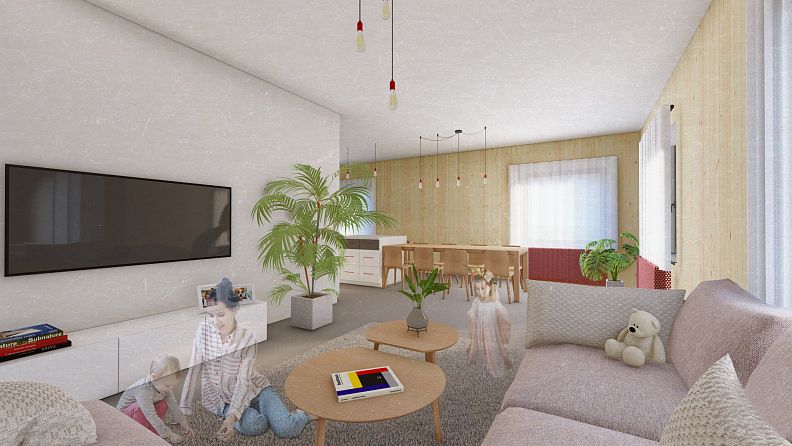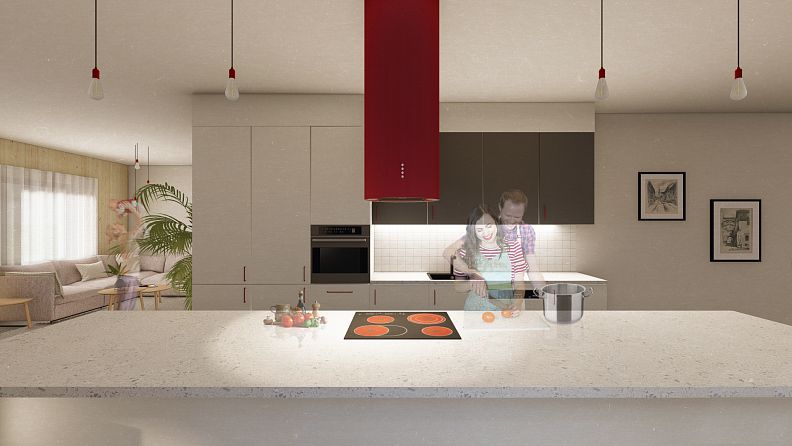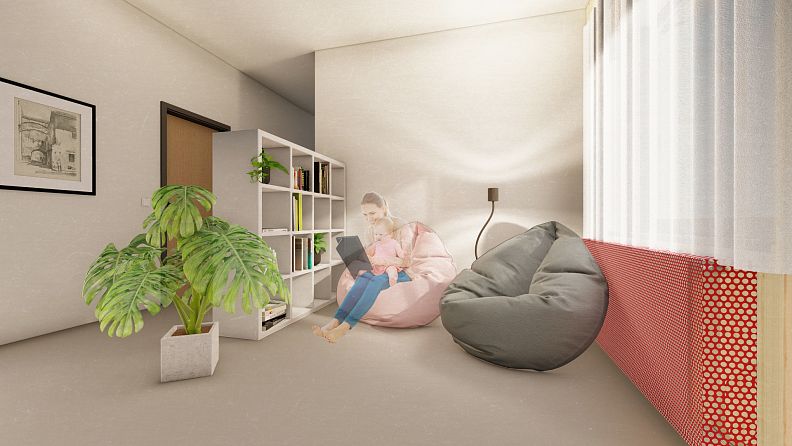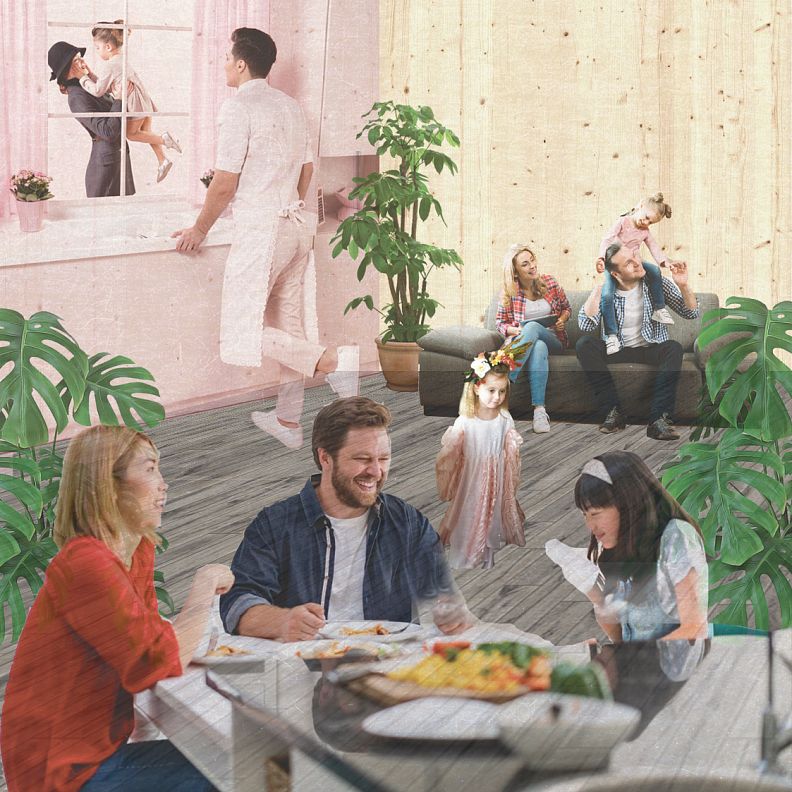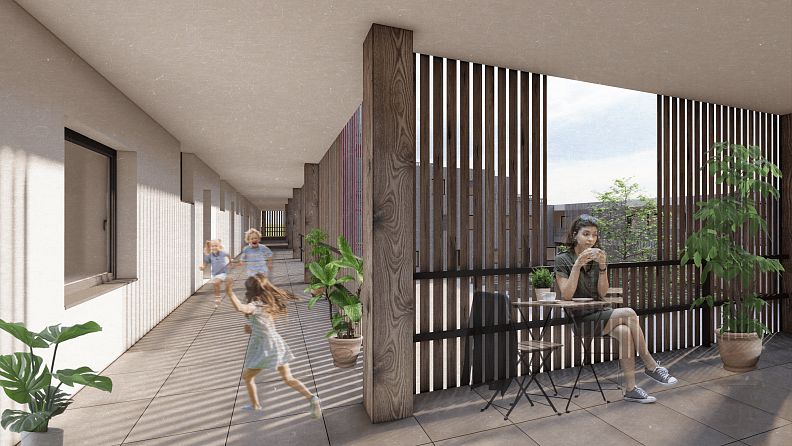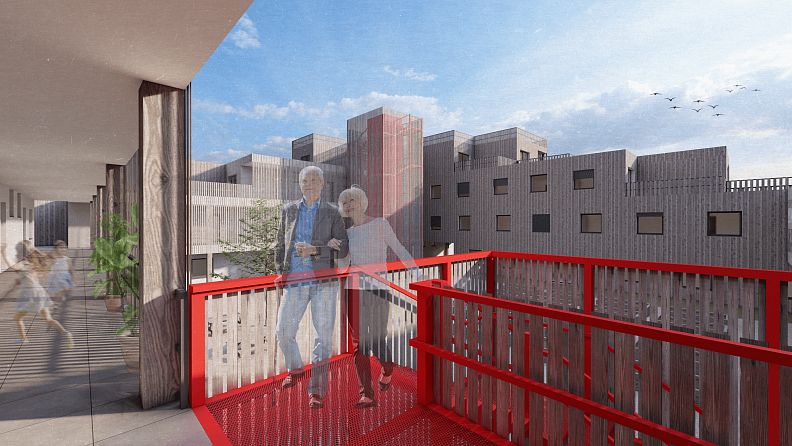Is co-living the future?

Project idea
Co-living - the coexistence of several people, who are usually unrelated in one household, where each of the families has its own separate private space, which is connected by one large common space. Nowadays, when we distance ourselves from each other and build houses where we do not even know the nearest neighbours, it is important to look for other types of housing. Since ancient times, people have lived in groups. That was until modern times, where the goal of life was to buy a huge house in the suburbs. But is endless family house construction the right way? Shouldn't we go back to our roots? To live in groups, help each other and take care of your community?
Project description
The idea of living together in a close circle is far from new. People have long since begun to create communities for survival. It is not for nothing that we are social creatures. An example can be Pythagoras' very effort to create communities consisting of strict vegetarians or, for example, the so-called "Circles", ie a type of village of radial-circular shape, which arose for mutual protection.
For example, a survey at onesharedhouse2030.com shows that people living in a co-living household prefer living in the city and prefer an even distribution of ownership among members. They want someone with a different lifestyle at home, but they also want a clear demarcation between private and shared space. And they have the least problem with sharing gardens, work and hobby rooms, living rooms or kitchens, however, almost the vast majority want to keep the bedroom and bathroom as private space. They think the best number of people in the community is 4-10.
In my proposal, I decided to keep the bedrooms and children's rooms completely private, while the bathroom would be shared by a maximum of members of one family. The rooms that would be shared by the whole household, ie the two families, would be: the living room, the kitchen, the dining room, the rest area and possibly the warehouse. Each building is complemented by additional space, outside the housing units. Each has a spacious kitchen with dining area, which is flexible and during the day can serve as a co-working place where neighbors from all over the building can meet, so they do not have to spend their eventual home-office in their apartment. This place could also be used for various members' meetings or parties. In moments, when we spend time together cooking dinner or directly at dinner, we start conversations, create future plans, share information, even tools or cars. Another extra space in the building is the space for services. I assume the establishment of a cafe, confectionery, but especially a brewery, while they would establish cooperation with a nearby brewery, or a small shop. In the courtyard there are community gardens, a place for barbecues or children's games. However, personally, I consider the 2.5 m wide porch to be another space suitable for meeting and spending free time.
Technical information
The building is designed as a wooden building made of solid wood, specifically CLT panels, which are placed on a concrete slab 1500 mm deep. Perimeter load-bearing walls transfer the load to the ceiling and the entire construction system is provided by NOVATOP: The partitions are non-load-bearing. The roofing is designed as an extensive green roof in combination with a flat roof - terraces.
Energy generation for heating and hot water is provided by a trivalent energy source for pellets, solar energy and a heat pump. There is a boiler room and a separate room for the storage of pellets on the ground floor providing heat for the whole building. The solar panels, which are located on the roof on the fourth floor, are photothermal, as these panels have come out as a more efficient choice in a rough calculation. I
Due to fire safety, the windows on the porch are only tiltable with automatic closing when a fire is detected.
